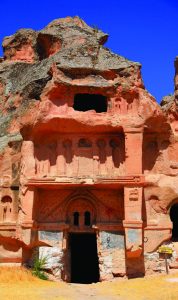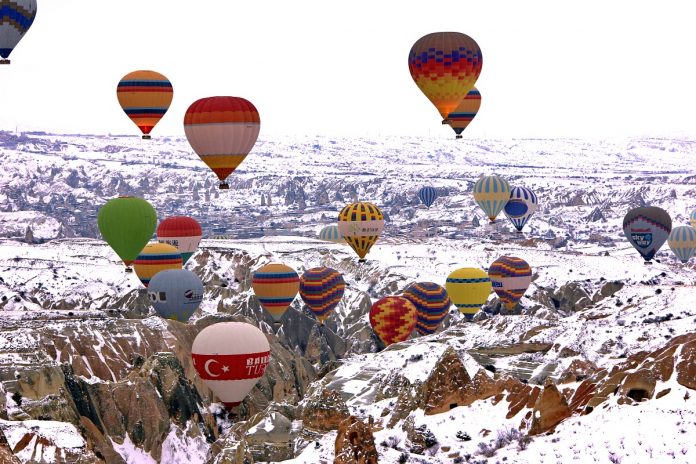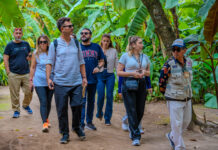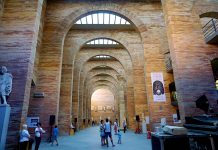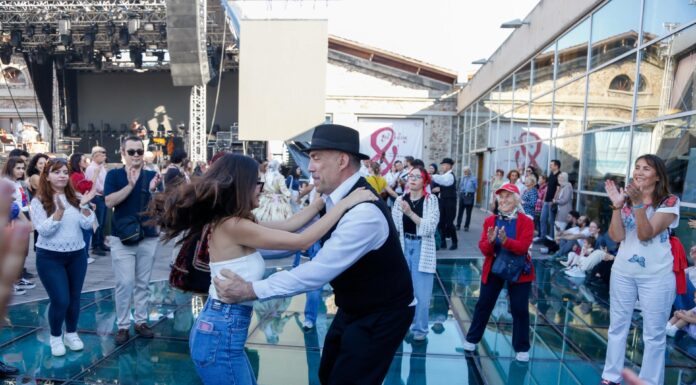CAPPADOCIA
By Çetin PEHLİVAN
If there ever was a list of the world’s most unique landscapes, Cappadocia, known in Persian times as the “Land of Beautiful Horses”, would definitely be top of the list. The geographical formation of this region began 60 million years ago when the soft layers of rock were formed from the lava and ash that erupted from the Erciyes, Hasandağ and Güllüdağ mountains. Over millions of years, the soft rock was eroded away by the rain and wind, giving the landscape its distinctive appearance, and the valley now features deep ravines, geographical shapes – the famous “Fairy Chimneys” – houses carved into the rock and underground cities that go to depths of hundreds of meters, all of which drives the imagination. In fact, it feels like you are visiting a movie set.
CAPPADOCIA REEFS
If you have never been to Cappadocia before, you might think it as a settlement like Göreme, Ürgüp and Uçhisar within the boundaries of Nevşehir city, however Cappadocia is actually a very large area that contains the cities of Nevşehir, Kırşehir, Niğde, Aksaray and Kayseri. The Cappadocia Reefs, however, cover the rather limited area of Uçhisar, Ürgüp, Avanos, Göreme, Derinkuyu, Kaymaklı, and Ihlara. The Cappadocia Reefs are around a three-hour drive from Ankara, passing through either Kırşehir or Aksaray, and there are also daily fl ights to Cappadocia Airport in the Gülşehir country from both Istanbul and Antalya.
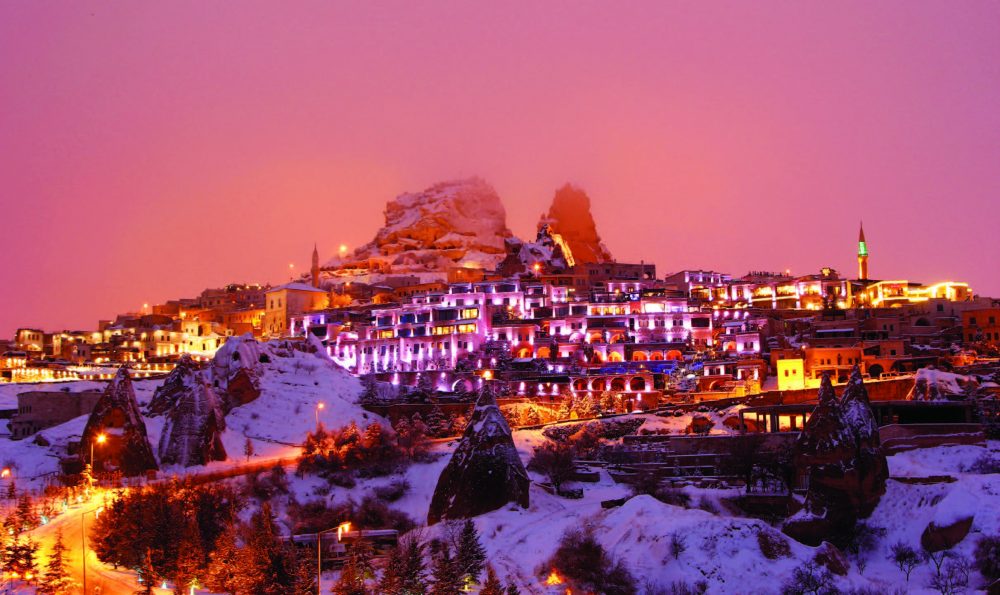
CASTLE OF UÇHİSAR
The castle of Uçhisar sits on top of a 50-meter high rock, which is the very peak of Cappadocia. It is surrounded by a touristic village that history, snow, rain and wind has embroidered with no match. This Castle is probably the most elaborate of all the rock-carved buildings in the area and serves as an observation post as the highest point of the valley, where you feel like you can touch the stars. From here you can watch one of the best sunrises in the world – taking in the visual feast of the fairy chimneys while the birds hum around. There are around 200 underground cities in Cappadocia, which were used by Christians as places of refuge when they came under attack, and Uçhisar Castle served as a sanctuary.
IMPRESSIVE GÖREME
As you make your way down from Uçhisar towards Göreme, you will encounter many observation posts along the road, so stop and enjoy the view for a while and take in the wonders of Cappadocia. Continuing your drive along this winding road towards Göreme, giant rocks that would not be out of place on a Stone Age movie set welcome you. In contrast to Uçhisar, Avanos and Ürgüp, the village of Göreme is located right at the center of the valley. The bulk of the buildings in the settlement are composed of rocks and stones, giving you a calm feeling that you cannot experience with the bird’s eye view from Uçhisar is daylight. At night, however, an irresistible sight appears once the lights of the houses and the hotels within the rocks start to glisten.
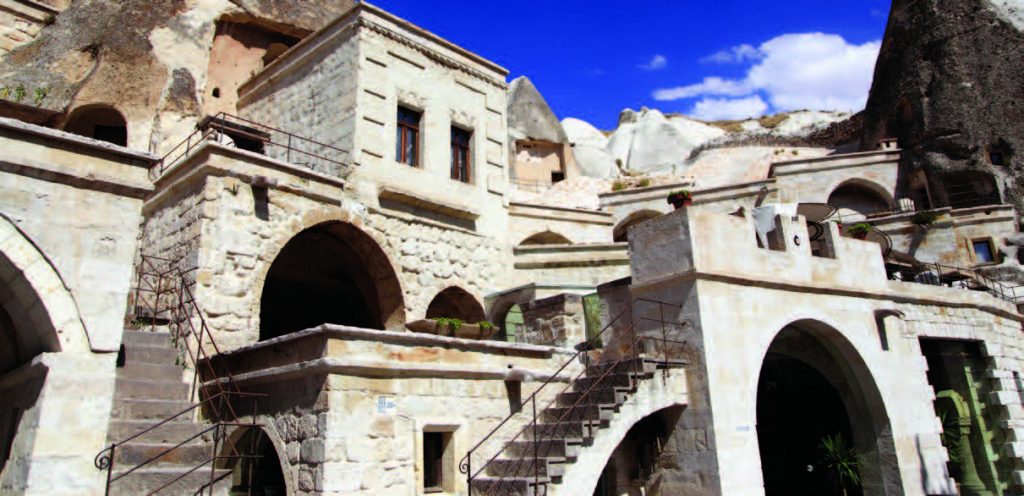
There are numerous boutique hotels in Cappadocia, most of which are carved into the rock, merging the authentic spirit of the past with a modern touch.
GÖREME OPEN AIR MUSEUM
The Göreme Open Air Museum can be found in the Göreme Historical National Park, and contains many large and small churches and monasteries carved into the soft volcanic rock. One can find significant remnants of Byzantine religious architectural works in this area, as well as many small well-hidden sanctuaries that can be found especially along the valleys and streams that were the first Christian structures. Once Christianity became acknowledged, the religious buildings in Göreme were no longer required to remain hidden, and they are today accepted as invaluable examples of Byzantine religious architecture.

ÇAVUŞİN – GATEWAY TO HISTORY
Çavuşin is a small village on the road from Göreme to Avanos and it is an authentic touristic area of the region. It is though that Christian Dervishes once inhabited Çavuşin, although there are five churches that can be found at Güllüdere, close to Çavuşin. The churches close to the valley provided protection from the raiding Muslim Arabs. The journey to the Paşabağı region on the way to Zelve and Ürgüp, very close to Çavuşin, takes you past the Fairy Chimneys that line the road, giving the area an ornate historical texture.
AVANOS – FAMOUS FOR EARTHENWARE POTS AND PANS
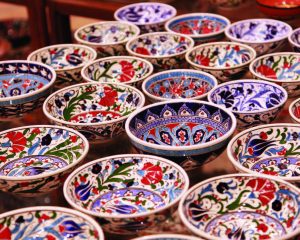 Avanos, famous for its earthenware, is divided by the Kızılırmak River, and bears similarities to European settlements. There are numerous accommodation choices at Avanos, along with shops selling ceramics and glorious jewelry stores, and massive restaurants serving delicious tastes from the traditional Turkish cuisine. A visit to Kızılırmak, which divides the city into two, can be spent strolling among the many restaurants and cafes, and along the two river banks, where social life is pulsing.
Avanos, famous for its earthenware, is divided by the Kızılırmak River, and bears similarities to European settlements. There are numerous accommodation choices at Avanos, along with shops selling ceramics and glorious jewelry stores, and massive restaurants serving delicious tastes from the traditional Turkish cuisine. A visit to Kızılırmak, which divides the city into two, can be spent strolling among the many restaurants and cafes, and along the two river banks, where social life is pulsing.
ÜRGÜP – A UNIQUE PICTURE
Located 20 km east of Nevşehir, Ürgüp offers a unique panorama in which natural beauty, cultural heritage and ethnographic characteristics come together. Ürgüp was founded on an area of many Fairy Chimneys, and so has an interesting landscape, and there are many interesting sights to see, including the Üç Güzeller (Three Beauties), the Pink Valley, the Greek Bathhouse, Kadı Church, Ürgüp Museum and Taşkınpaşa Mosque, along with many churches. You can pick up many handmade souvenirs here as precious memories of your visit.
UNDERGROUND CITIES
There are around 200 underground cities at Cappadocia, but only a few are open to the public. These subterranean settlements, which provided security and shelter against attack for thousands of years, are connected by a network of tunnels. The most popular of these can be found at Derinkuyu and Kaymaklı, which are 10 km apart. While making your way through the cramped tunnels, you may come across a church, a living room or even the cellar of a house, and as you make your way deeper, you wonder what threats could force people to construct cities so far underground, and how hard the living conditions would have been at the time.

INTERESTING SHAPES OF THE VALLEYS
Cappadocia has numerous valleys, formed through the erosion of the soft rock by wind and rain, and this has led to the creation of one of the most unusual areas of natural beauty in the world. Some of these valleys are named after their colors, and some for after their geographical features. It is hard to imagine, but if you look over these valleys from a high point, they resemble the skeletons of gigantic creatures. Some of the most important of these are Güllüdere, Kızılçukur, Kılıçlar, and the Love and Pigeon Valleys.
BALOON TOUR
Cappadocia is a popular place to visit due to its natural and historical beauty, and its balloon rides are also very well-known. Tour organizers claim that Cappadocia is one of the best ballooning sites in the world. If you have never taken a balloon tour before, clear your schedule and definitely include one in your visit. Tours start very early in the morning, and so be ready at 5am when buses will come to transfer you to the launch area. Dozens of immense balloons are slowly inflated with helium, and the dark sky becomes illuminated by the many gas burners, creating an astonishing sight. There are more than 20 tour companies Cappadocia offering balloon rides, and on a busy day, over 120 balloons take off at the same time. Since it is not possible to launch when temperatures are high due to the use of helium gas, which is flammable, the ideal time of year for balloon trip is early in the morning in spring or autumn. The tours take you over the valleys, mountains and hills around Göreme, Ürgüp and Uçhisar, and the mix of colors among the many balloons creates an unforgettable feats for the eyes. There are no restrictions on balloon rides, as long your age and health permits. Each balloon takes 10 to 12 people and the price per person is around 150 Euros.
